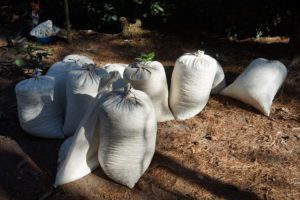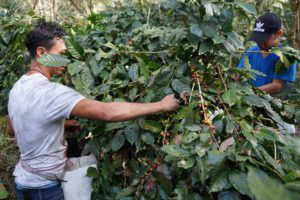The Rise of Single-Serve Coffee Machines

Before single-serve coffee machines like the Keurig boomed in popularity in the 2000s, coffee life was a lot more…communal. Of course, there were small coffee makers and jars of instant. Still, coffee shops were unique locales because they focused on brewing individuals a cup just the way they liked it. Nowadays, there is a wide range of coffee machines for the home and office that prepare different kinds of coffee. You need not visit a coffee shop or buy an expensive coffee machine to get your favorite latte. Making your friend their style is easier too. Serving up individual brews at home and at the office is easy. As far as the office, this can help the average worker breathe a sigh of relief. While in the past your boss might have insisted you finish a five-hour-old pot before brewing another, individual coffee machines have prevented that struggle. Was anyone cleaning the coffee ger regularly anyway?
Overall Variety
It seems like individual coffee machines may have bred more interest in specific preparations in the past decade. While in the past, requests for a French press or pour-over were rarer in restaurants and coffee shops, now people are embracing all types of preparations. Starbucks’ booming popularity with sweet coffee drinks probably had something to do with it too. You probably haven’t heard, but Starbucks…is…everywhere. While this isn’t true in rural areas, in the cities and suburbs where they do have a presence, they are ubiquitous. Why stop at 2 locations in a medium-sized town? They and similar chains with drive-throughs have made getting coffee nearly every day feasible with cold brews for summer. There are always different preparations and tastes for drinkers who like to try new styles.
Starting Younger
Coffee drinking is starting younger. With teenagers gathering at shops to get coffee with all the syrups and fixings, coffee-loving is seeping lower, age-wise. It’s not just the fixings—some already love coffee. Local coffee shops see young study groups too. Diners, malls and pizza shops have ceded ground to coffee shops. They’re now popular low-budget, safe gathering spaces for young people. Even if students must gather for a group project or to kill time until basketball practice, they’re still more fun than the library. Espresso shots aren’t an unheard-of dare for young people.
Aside from preteens and teens gathering at coffee shops, there’s also been an increasing interest in energy and efficiency in America since…forever. A decade ago, energy drinks like Red Bull were all the rage. Some coffee shop owners wondered what the future would hold. Would the next cohort of young people purchase coffee like previous generations? Since then, sketchy ingredients, loads of sugar and cardiovascular risks have caused people to turn away from energy drinks. Still, many people got used to living life highly energized. While it’s hard to measure former energy drinkers’ migration to, or increasing consumption of, coffee, a preference for lots of drink-based energy lingers. In addition, people in many countries start drinking coffee younger. In Latin American countries like Honduras, coffee is drunk by the family, as an event and children just end up partaking.
Coffee Tourism
Although most of us can’t travel to different coffee-producing locales regularly, it’s easier than ever to sample different coffees from around the world. In fact, coffee shops are relaxed social spaces to pass through, chat or get something done. In recent decades, sprawl has separated friends and family members into far-flung parts of suburbs and outskirts. Meanwhile, the rising cost of living and migration to cities has resulted in people living in smaller spaces. Like Europeans, many people socialize in coffee shops instead of inviting friends into small homes.
Younger generations, as in people in their 20’s, 30’s and 40’s, now do less of everything at home. They stop by coffee shops on the way to work. They stop at happy hour on the way home. Interest in premium coffee has risen on the coattails of interest in wine and craft beer in the past 20 years. People have gotten more into the origins and crafting of alcohol. With wine bars cropping up, some of which have wine on tap for tasting, people can sample more at cheaper rates. Wine clubs ship a variety of wines to wine lovers. Everyone seems to know someone who brews beer at home or works at a microbrewery. With choice beverages always on people’s minds, that enthusiasm and precision have carried over to coffee preferences. The rising interest in flavors, aromas and roasts is no coincidence. With GMOs, dietary restrictions like being gluten-free, and avoiding pesticides, even more of the population cares about what they consume. With the chemicals that go into some decaffeination processes, it’s no wonder.
US Population Differences

This may not come as a surprise, but the US is getting less and less British all the time. Tea just cannot regain its footing in Yankee territory. On the contrary, the US has seen different waves of coffee lovers immigrate to the US. Between 1900 and 1910 alone, two million Italian immigrants arrived in the US. The areas now making up Italy were the first in Europe to drink coffee. They invented espresso. Similarly, waves of coffee-loving Greek immigrants arrived at the same time, and again in the 1960s and 70s. Coffee shops are everywhere in Greece.
In recent decades, people have arrived from countries proud of their coffee cultivation. Brazilian, Colombian, Central American, Mexican and Caribbean immigrants love their coffee. On that note, so do Germans, who don’t grow it, but love it and come to the US in large numbers to work in manufacturing for a time. But back to Latin immigrants, who also start drinking it at a younger age. In these countries, coffee drinking is a marathon…and sometimes a sprint too! The uptick in coffee-loving in the US doesn’t just have to do with the percentage of the population, but also the enthusiasm they bring.
Many Latin countries outside of the big three well-known coffee producers actually generate tons of delicious coffee. In fact, much of this is so good that people who love exploring single-origin coffees try countless different types. With better shipping options today, taking a tour of coffee-growing regions from outside the US is easier than ever.
Specialty Coffee That Wows
In Santa Rosa de Copán, Honduras, Subida Coffee Co. produces delectable coffee grown under excellent conditions. We offer a medium roast and a dark roast grown and crafted with expert care at the direction of agricultural engineers. They guided the farm to attain Rainforest Alliance certification. Part of a larger non-profit, Subida helps efforts in the local community. Gourmet coffee beans from Honduras can arrive to your door for a great cause!

